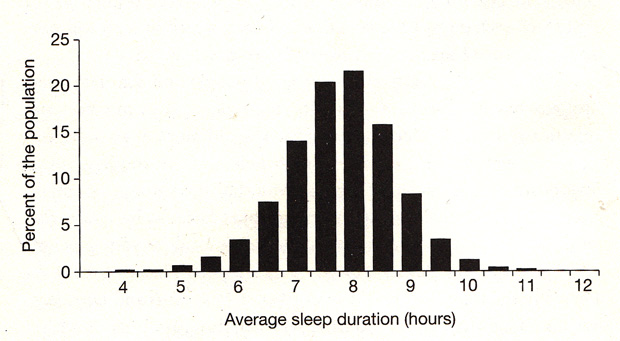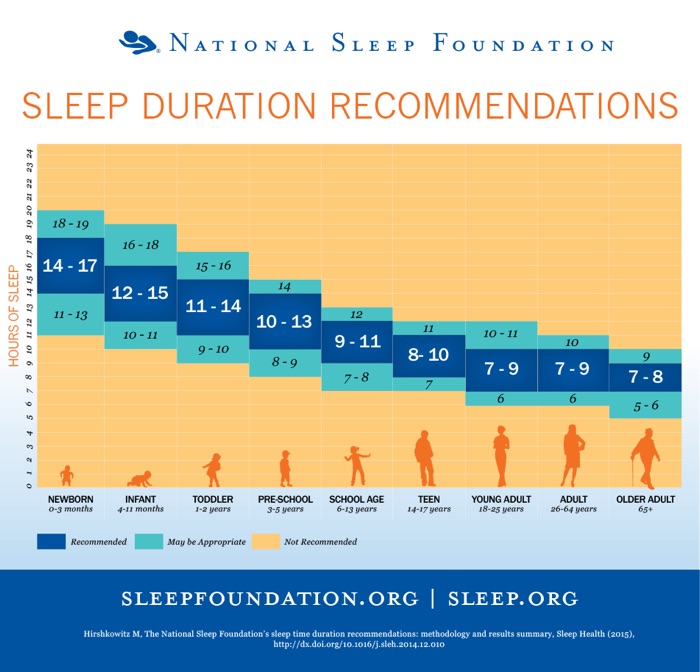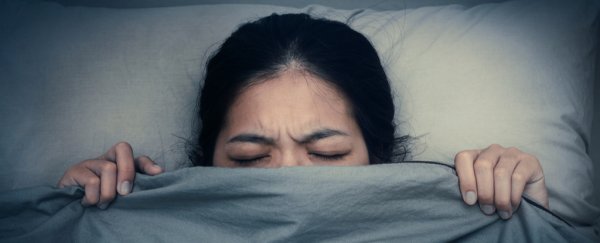In theory, sleep takes up about 8 out of every 24 hours, one-third of our lives. But many of us don't actually sleep that much and are tired all the time – more than a third of Americans don't get the seven to nine hours of sleep a night that the CDC recommends.
Yet we spend additional time worrying about our sleep. According to research by the National Sleep Foundation, more than a third of Americans say their sleep quality is "poor" or "only fair". But how much sleep do we really need?
First, let's get the bad news out of the way: there isn't going to be a one size fits all answer – sleep needs really do vary from person to person.
You could be one of those incredibly rare people that can actually get by on a few hours of sleep a night (almost definitely not), or you could be on the opposite end of the spectrum, what doctors refer to as a "long sleeper" who might need 11 hours a night.
But there are some things we do know about sleep, and these can help you figure out how much sleep you actually need – and how to better get a night's rest.
Here are five facts that will help you figure out what your personal sleep patterns are and how they compare to the rest of the population.
1. There's a reason that doctors usually recommend 7 to 9 hours of sleep
The amount of sleep that people need falls into a bell curve type distribution, with the vast majority of the population needing between 7 and 9 hours of rest each night to be refreshed.
This chart, from the book Internal Time: Chronotypes, Social Jet Lag, and Why You're So Tired by German chronobiologist Till Roenneberg, shows the general distribution of sleep needs. (Chronobiology is the science of our internal clocks.)
 Till Roenneberg
Till Roenneberg
2. You have a natural chronotype, or body clock, that determines when you are most comfortable sleeping and being awake
Most of us think of ourselves as morning or night people, but those divisions aren't scientific – they're just ways of comparing ourselves to one another.
"Where you define owl or lark is really arbitrary," says David Welsh, an associate professor studying circadian clocks at UC San Diego.
Welsh says that if you look at large surveys of populations, you get a normal distribution of chronotypes – most people have fairly 'average' chronotypes, some prefer to get up a bit earlier or later, and small groups naturally rise extremely early or late.
There's no line that distinguishes different chronotypes.
But we all do have an internal schedule that makes us feel awake or sleepier at different times of day. Because of factors including hormone levels, genetics, and light exposure, some of us are more alert in the mornings and some of us prefer times later in the day.
If your schedule isn't aligned with your chronotype, you will feel tired and out of sync.
 National Sleep Foundation
National Sleep Foundation
3. The amount of sleep you need changes throughout your life
The seven to nine hour recommendation is standard for adults, but kids need much more sleep, while some older people need less.
This chart by the National Sleep Foundation shows how these requirements change as kids grow up.
In addition to length of sleep needs changing, chronotypes change throughout life as well.
According to Roenneberg's book, young children naturally tend to be more morning oriented. Around puberty, they're more likely to shift into a night owl chronotype, which tends to shift back to an earlier chronotype after age 20.
4. There are some things you can do to adjust your natural chronotype
While your sleep needs (both chronotype, when you are alert, and length, how much sleep you need) are mostly genetic, there are certain things you can do to adjust your schedule and at least make it a bit easier to get up earlier.
Our bodies respond to light, especially the powerful natural light of the sun. Being exposed to that light in the morning tells our body that it's time to be alert and moving.
At night, sitting in the dark stimulates the production of the hormone melatonin, which helps us relax and fall asleep (we mess with this process by looking at bright light from smartphones).
But we can adjust this to a degree by controlling our exposure to light. This process, called entrainment, is what our bodies have to do when we go to a different time zone – this is why we get jet lagged.
But we can also use this to train our bodies to get up and go to sleep earlier by exposing ourselves to natural light in the morning and avoiding bright light at night.
This won't turn you into a morning person, but it can make prying the covers loose just a little less painful.
5. Your sleep needs are personal; try to figure out what works for you
Sometimes new research will come out, and people will claim something like "studies have found that seven hours is the optimal amount of sleep – not eight".
But as interesting as any sleep research is, we do know that people are different and have different needs.
The findings of one study don't translate into recommendations for everyone. In the case of sleep, experts recommend figuring out what personally works best for you.
If you can let yourself sleep naturally for a few days to a week, going to bed when you are tired and waking up whenever is natural, preferably while limiting alcohol and caffeine, you'll have a better idea of your individual needs.
Get some sun during the day, along with some exercise.
If you do all that but still have trouble sleeping, it might be time to talk to a doctor. You could be one of the large percentage of the population with undiagnosed sleep apnea, especially if you snore.
Or you could have some other disorder that can be addressed.
It's worth taking the time to figure out what you can do to sleep better though. Not getting enough raises some serious health concerns.
This article was originally published by Business Insider.
More from Business Insider:
